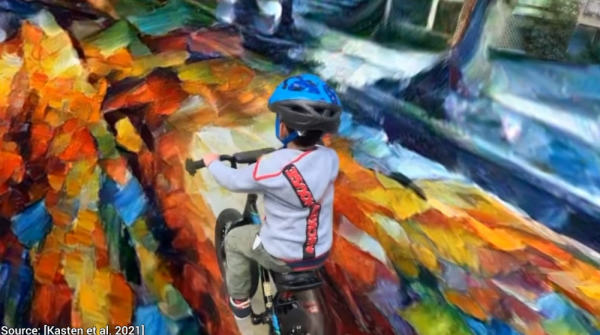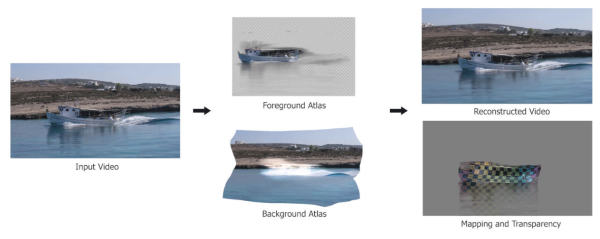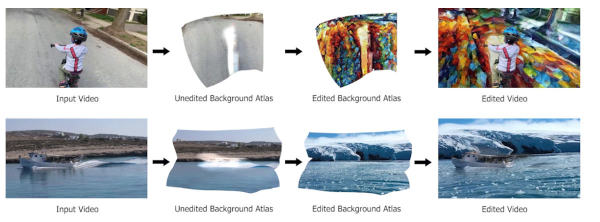[13:06 Fri,21.January 2022 by Thomas Richter] |
A team of researchers from Israel&s Weizmann Institute of Science and Adobe Research has unveiled an interesting new algorithm that represents another milestone on the road to easy-to-use object-based video editing via AI, even for beginners. The algorithm analyzes the input video and decomposes it into foreground (objects) and background. What is special about this is that the algorithm develops an understanding of the objects and their relationships in space from the 2D video and can thus manipulate individual objects and the background spatially correctly, including, for example, occlusions, i.e. when a moving object is briefly obscured.  This makes it easy, for example, to change the background of a video, to manipulate (moving) objects in the foreground (including - as can be seen in the example video - the fabric of a dress with the inclusion of a fold that changes while walking), or to remove objects from a video in a very classical way. And the algorithm copes with changes in the background or foreground resulting from movements, even a moving water surface or dynamic reflections and shadows. Such manipulations, which are actually complex, work thanks to the new method by simply editing a single frame of the background or foreground - the adjustments to perspective or motion are then handled by the algorithm.  The method is not yet perfect, but it is already better and, above all, much easier and more universal to use than previous ones. If it is further optimized in the future, this algorithm could perhaps replace traditional chroma keying via green screen in many cases.  Adobe has already proven with its AI Sensei technology that interesting AI research in the field of video can also be incorporated into consumer software such as Adobe&s Premiere Pro, for example at And here is the presentation of the new algorithm by 2 Minute Papers: deutsche Version dieser Seite: Video Editing per KI läßt Objekte verschwinden und ersetzt Hintergründe |





